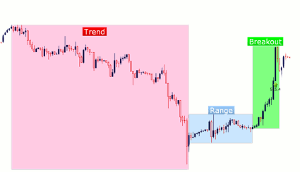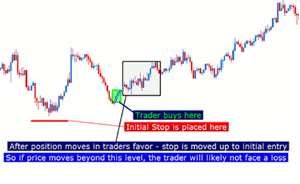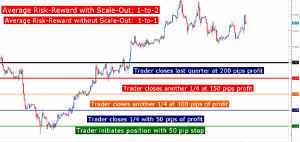Traders should look to concentrate their strategy in the optimal market condition, and their trade and risk management should be customized for that condition, says James Stanley of DailyFX.com.
The reasons for having a trading strategy are numerous; but key of which is that it allows a trader to take a certain approach in an uncertain endeavor like trading.
Finding that strategy, however, can be a challenge. Many traders like to make their own strategies; and this can be a fundamental-based approach or something built around technical analysis. Other traders prefer to adopt another strategy to make it their own, and these can all be ways of going about finding that “right fit” for each individual trader to traverse the marketplace.
But the strategy is just a part of the approach; and in many cases, it’s one of the less-important factors that can determine a trader’s success.
In this article, we’re going to look at three factors that can be more important than your trading strategy so that you can look to properly address these issues in an effort to make your overall approach most effective.
Focus Your Strategy in the Optimal Condition
The importance of matching your trading strategy to the prevailing market condition cannot be understated. In the image below, we show the three primary conditions of trends, ranges, and the breakout:
But just knowing the three primary market conditions is not enough: Traders need to be able to adjust their strategy so that it’s designed to work within the condition for which it was built.
A combination of multiple time frame analysis along with a few different indicators can be used to more accurately determine the “bigger-picture” condition.
Employ Trade Management Befitting of the Market Condition
The entry into a trade is but a small part of the overall approach. Once the trade is opened and the position is live, that is when the trader is left to their devices.
Many traders go into a trade without any trade management strategy at all. Perhaps they place a stop and limit and just watch prices move expecting to get some magical “gut-instinct” type of feel that will allow them to know exactly what to do at the right time.
This can be pretty disastrous: It’s a straight road to falling into the trap of the number one mistake that FX traders make. Guessing is not a solid trading strategy; nor is guessing a solid trade management strategy.
Traders should design their trade management in the same way they design the entry into the trade. So, when the trade is entered, a protective stop is placed in case the position doesn’t work out; and profit targets are set in the event that it does work.
The first point of emphasis for trade management is often the break-even stop. This is when the trader can move their stop-loss to their initial entry price so that, worst case scenario; the trader can avoid a loss on the position.
But the optimal time to move the stop to break-even differs amongst market conditions. Trend strategies are, by nature, looking for a bias in the marketplace to continue. So the fear of reversal is high, and traders can look to move their stop to break-even relatively quickly in an attempt to avoid losing precious capital if the profit target isn’t obtained.
Ranges, on the other hand, are generally more congested and can be slower-moving type of markets. This can lead the trader to be slightly more conservative on the break-even stop movement; since a quick break-even stop move might entail more instances of getting ‘wicked’ out of the trade as the range continues with an element of congestion.
NEXT PAGE: Structure Risk Management Appropriately
|pagebreak|Breakouts are marked by their sharp and fast price movements. The upside of this is that if the trader finds themselves on the right side of the move, the benefit can be fantastic. But, if on the wrong side of the move this can be a very costly endeavor. This is where traders will usually look to be most aggressive with their break-even stop move, as a breakout market can reverse very quickly; and that gain in the trade can quickly be wiped away as a loss.
After the break-even stop has been addressed, traders can look to implement scale-out strategies in trending and breakout market conditions in an effort to net as much as possible from the position. This allows traders the potential to get far more on the profit side of the trade than they might have had they just placed a limit order and let the profit target get hit.
The opposite of this, scaling-in, entails traders adding positions as the trade moves in their favor. This is most relevant in trending conditions; and it allows the trader to enter with the trade idea with slightly less risk since a smaller initial position is used to initiate the trade. If the trade shows profitable potential, then another lot can be added. But to get this type of movement, the trader really needs a strong trend to work with; while breakouts are generally too quick and violent to be able to tactically scale-in to a position; and the limited up-side of ranges makes the prospect just less appealing.
Structure Risk Management Appropriately
Risk management is probably one of the biggest determinants of success or failure in markets.
But just as we saw with the previous two factors, it isn’t as simple as saying “this is the best way to always manage our risk, so let’s just do that.” No: The risk management of a strategy should be customized to the strategy itself, and the condition with which it is looking to trade in.
Trend strategies, by nature, are looking for a bias to continue in the marketplace. But, the fear of a reversal is ever-present, and traders should address this by targeting a minimum 1-to-2 risk-to-reward ratio for each entry in a trend-based system. Does this mean the position has to be closed once two times the initial risk is met? No, absolutely not. Traders can look to scale-out of the position as prices move in their favor in an effort to capture the most up-side.
Scaling Out Can be Hugely Beneficial in Strong Trends
Range strategies are generally more modest; and up-side is generally limited. After all, if we’re buying support in a range, we rationally want to close out that trade once resistance is met; in anticipation of the range continuing. The risk-to-reward ratio of a range strategy should be greater than 1-to-1; and the reason a trader doesn’t want to risk more than they might make is because you never know if the range will break against your position; and since up-side is limited, the prospect of a breakout continuing against the trader can eliminate profits from numerous successful trades.
Breakouts are even more difficult to be on the right side of, and this is the condition that often gives new traders the most trouble. False breakouts are abundant, and each false breakout can entail a hefty loss if risk isn’t properly managed. On the other hand, when prices do move in the trader’s favor, the potential up-side can be enormous. This is a necessity to factor into the risk management of a breakout strategy.
Traders should look to be most aggressive in a breakout strategy, since so many false breakouts will happen. Traders should look for a minimum 1-to-2 risk-to-reward ratio as a minimum litmus; with many traders looking at even more aggressive risk-to-reward ratios of 1-to-4 or 1-to-5.
By James Stanley, Trading Instructor, DailyFX.com
























